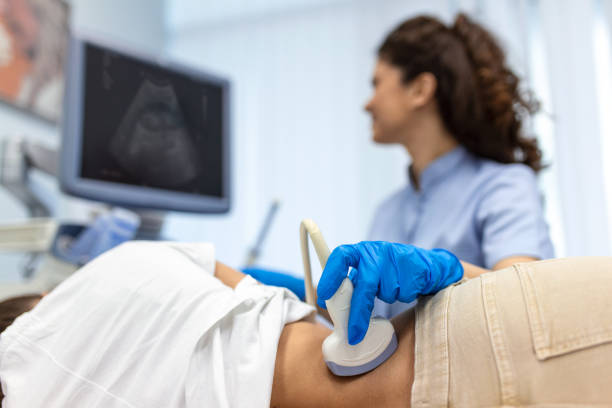Find out the “Top 5 Most Common Diseases That Damage Your Liver Easily” – The liver is an essential organ that performs numerous vital functions in the body. It helps in detoxification, metabolism, and digestion, among other things. However, various diseases can adversely affect the liver’s health and functionality. In this article, we will explore the top five most common diseases that damage the liver and their causes. By understanding these diseases, their causes, and the preventive measures one can take, we can promote liver health and overall well-being.

Table of contents
1. Hepatitis: A Silent Threat
2. Non-Alcoholic Fatty Liver Disease: The Modern Epidemic
3. Alcoholic Liver Disease: The Consequence of Excessive Drinking
4. Liver Cirrhosis: The Irreversible Damage
5. Liver Cancer: A Life-Threatening Disease
6. FAQs
7. Conclusion
Hepatitis: A Silent Threat
Hepatitis, an inflammation of the liver, is a leading cause of liver damage worldwide. It can be caused by viral infections, such as Hepatitis A, B, C, D, and E. These viruses spread through contaminated food and water, sexual contact, or exposure to infected blood. Hepatitis often presents mild symptoms or remains asymptomatic, making it a silent threat. However, if left untreated, it can progress to severe liver damage, leading to cirrhosis or liver cancer. [1]
To prevent hepatitis, vaccination is highly recommended. The Hepatitis A and B vaccines are effective in preventing these viral infections. Practicing good hygiene, safe sexual practices, and avoiding contact with infected blood or bodily fluids also reduces the risk of hepatitis.
Don’t miss | 4 Conditions Eating Too Much Groundnut Can Cause
Non-Alcoholic Fatty Liver Disease: The Modern Epidemic
Non-Alcoholic Fatty Liver Disease (NAFLD) is a widespread condition characterized by the accumulation of fat in the liver. It is often associated with obesity, insulin resistance, high cholesterol, and diabetes. NAFLD progresses from simple fatty liver to non-alcoholic steatohepatitis (NASH), which causes inflammation and liver damage.
The rise of NAFLD can be attributed to sedentary lifestyles, unhealthy eating habits, and the prevalence of obesity. To combat NAFLD, adopting a healthy lifestyle is crucial. Regular exercise, a balanced diet low in processed foods and added sugars, and maintaining a healthy weight can significantly reduce the risk of developing NAFLD.[2]
Alcoholic Liver Disease: The Consequence of Excessive Drinking
Excessive and prolonged alcohol consumption can lead to alcoholic liver disease (ALD). ALD encompasses a range of liver conditions, including alcoholic fatty liver disease, alcoholic hepatitis, and alcoholic cirrhosis. The liver metabolizes alcohol, but excessive alcohol consumption overwhelms its capacity, leading to liver damage.
Alcohol-induced liver damage occurs due to the toxic byproducts of alcohol metabolism, inflammation, oxidative stress, and the formation of scar tissue. The severity of ALD depends on the amount and duration of alcohol consumption.[3]
To prevent alcoholic liver disease, it is essential to practice moderation or abstain from alcohol altogether. Understanding the recommended limits for alcohol consumption and seeking help for alcohol addiction are crucial steps in protecting the liver from the damaging effects of alcohol.
Liver Cirrhosis: The Irreversible Damage
Liver cirrhosis is a late-stage liver disease characterized by irreversible scarring of the liver tissue. It is often the result of long-term liver damage caused by various factors such as hepatitis, alcohol abuse, non-alcoholic fatty liver disease, or autoimmune conditions.
As liver cirrhosis progresses, healthy liver tissue is replaced by scar tissue, which disrupts the liver’s normal structure and function. This can lead to complications such as portal hypertension, ascites (fluid accumulation in the abdomen), hepatic encephalopathy (brain function impairment), and an increased risk of liver cancer.
Preventing liver cirrhosis involves avoiding or managing the underlying causes. This includes practicing safe sex, getting vaccinated against hepatitis, moderating alcohol consumption, maintaining a healthy weight, and seeking early treatment for liver diseases. Regular check-ups and liver function tests can also help detect cirrhosis at an early stage when intervention may still be possible.[4]
Don’t miss | 5 Disturbing Signs of Stomach Ulcer To Watch Out For
Liver Cancer: A Life-Threatening Disease
Liver cancer, or hepatocellular carcinoma (HCC), is a life-threatening condition that originates in the liver cells. It can develop as a primary cancer or spread to the liver from other parts of the body (metastatic liver cancer).
The main risk factors for primary liver cancer include chronic infections with hepatitis B or C viruses, liver cirrhosis, excessive alcohol consumption, obesity, and certain genetic conditions. Metastatic liver cancer occurs when cancer cells from other organs, such as the colon, breast, or lung, spread to the liver.
Early detection and treatment are vital for improving the prognosis of liver cancer. Regular screening for high-risk individuals, such as those with chronic hepatitis or cirrhosis, can help identify liver cancer at an early stage when treatment options are more effective. Treatment may involve surgery, radiation therapy, chemotherapy, targeted therapy, or a combination of these approaches.[5]
FAQs
-
What are the common symptoms of liver disease?
The symptoms of liver disease can vary depending on the specific condition and its severity. However, common signs to watch out for include jaundice (yellowing of the skin and eyes), abdominal pain and swelling, fatigue, unexplained weight loss, nausea, vomiting, dark urine, and pale stools. If you experience any of these symptoms, it is important to consult a healthcare professional for proper evaluation and diagnosis.
-
Can liver disease be prevented?
While some liver diseases may not be entirely preventable, there are steps you can take to reduce the risk. Vaccination against hepatitis A and B, practicing safe sex, avoiding excessive alcohol consumption, maintaining a healthy weight, and adopting a balanced diet can significantly lower the chances of developing liver disease.
-
What are the risk factors for liver disease?
Several factors can increase the risk of liver disease. These include chronic hepatitis B or C infections, excessive alcohol consumption, obesity, diabetes, exposure to certain toxins, certain medications, genetic conditions, and a family history of liver disease.
-
How is liver disease diagnosed?
Liver disease can be diagnosed through various methods. Initially, a healthcare professional will conduct a physical examination and evaluate your medical history. Blood tests, such as liver function tests and viral hepatitis markers, can provide valuable information about liver health and the presence of specific infections.
Imaging tests, including ultrasound, CT scans, or MRI, may be performed to assess the liver’s structure and detect any abnormalities or signs of liver damage. In some cases, a liver biopsy may be necessary, where a small sample of liver tissue is taken for analysis.
If you suspect you may have liver disease or are experiencing concerning symptoms, it is crucial to consult a healthcare professional. They will be able to determine the appropriate diagnostic tests based on your individual circumstances.
-
What treatments are available for liver disease?
Treatment options for liver disease depend on the specific condition and its severity. In the case of viral hepatitis, antiviral medications may be prescribed to manage the infection and reduce liver inflammation. Lifestyle modifications, such as adopting a healthy diet, exercising regularly, and avoiding alcohol or certain medications, can also play a significant role in managing liver disease.
In advanced stages of liver disease, interventions like liver transplantation may be necessary. This involves replacing a diseased liver with a healthy liver from a deceased or living donor. Liver transplantation can be a life-saving procedure for individuals with end-stage liver disease or liver failure.
It is important to note that treatment approaches and recommendations may vary for each individual. A healthcare professional will assess your specific condition and provide tailored guidance and treatment options.
-
Is liver transplantation a viable option for liver disease patients?
Liver transplantation is considered a viable option for individuals with end-stage liver disease or liver failure when all other treatment options have been exhausted. It can provide a new lease on life for those whose livers are severely damaged and no longer functioning adequately.
However, liver transplantation is a complex procedure that requires a thorough evaluation process to determine eligibility. Factors such as the severity of liver disease, overall health status, availability of a suitable donor, and individual circumstances are taken into account.
Liver transplantation is typically reserved for individuals with advanced liver disease or those at high risk of liver-related complications. If you or a loved one is facing liver failure, it is essential to consult with a transplant specialist who can provide detailed information about the transplantation process and assess your eligibility.
Conclusion
Maintaining a healthy liver is crucial for overall well-being. The top five most common diseases that damage the liver include hepatitis, non-alcoholic fatty liver disease, alcoholic liver disease, liver cirrhosis, and liver cancer. Understanding the causes, symptoms, and preventive measures for these diseases is essential for protecting liver health.
By practicing healthy lifestyle habits, such as moderate alcohol consumption, a balanced diet, regular exercise, and avoiding risk factors like unprotected sex or exposure to infected blood, you can reduce the risk of liver disease. Additionally, early detection through regular check-ups and screenings plays a vital role in improving prognosis and treatment outcomes.
Remember, your liver plays a significant role in your body’s overall functioning. Take care of it, and it will take care of you.









Leave a Reply